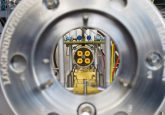Analytical protocols based on LC–MS, GC–MS and CE–MS for nontargeted metabolomics of biological tissues

Invasive, site-specific metabolite information could be better obtained from tissues. Hence, highly sensitive mass spectrometry-based metabolomics coupled with separation techniques are increasingly in demand in clinical research for tissue metabolomics application. Applying these techniques to nontargeted tissue metabolomics provides identification of distinct metabolites. These findings could help us to understand alterations at the molecular level, which can also be applied in clinical practice as screening markers for early disease diagnosis. However, tissues as solid and heterogeneous samples pose an additional analytical challenge that should be considered in obtaining broad, reproducible and representative analytical profiles. This manuscript summarizes the state of the art in tissue (human and animal) treatment (quenching, homogenization and extraction) for nontargeted metabolomics with mass spectrometry.
The field of metabolomics is an emerging and promising omic science in systems biology, which aims to depict the metabolic profile in complex systems through the combination of data-rich high-throughput analytical techniques and multivariate data analysis. Metabolomics investigates single component effects on a biological system and offers a holistic approach in the exploration of the molecular details of multiple factors on an entire biological organism. Metabolomics techniques allow for a high-throughput analysis of small molecules in biofluids and tissues, giving metabolic profiles of the end products. Comparison of metabolic profiles from different phenotypes can be supportive in the identification of metabolic changes and as well as helping to understand the molecular mechanism, integrated biochemical pathways and disease progression.
Click here to view the full article.






